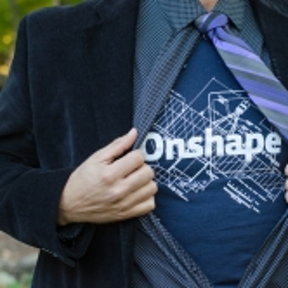Welcome to the Onshape forum! Ask questions and join in the discussions about everything Onshape.
First time visiting? Here are some places to start:- Looking for a certain topic? Check out the categories filter or use Search (upper right).
- Need support? Ask a question to our Community Support category.
- Please submit support tickets for bugs but you can request improvements in the Product Feedback category.
- Be respectful, on topic and if you see a problem, Flag it.
If you would like to contact our Community Manager personally, feel free to send a private message or an email.
Fillets operating in reverse
 simon_9
Member Posts: 17 ✭✭
simon_9
Member Posts: 17 ✭✭
I am trying to fillet between two objects - in this case a tube and the plate to which it is attached and the fillet is going down into the plate rather than merging the tube and plate on the face I want...
I must be doing something wrong but I have no clue what it might be - any help out there please?
And since a picture is better than a thousand words, hopefully the screen shot shows what I have at the moment.
Simon
I must be doing something wrong but I have no clue what it might be - any help out there please?
And since a picture is better than a thousand words, hopefully the screen shot shows what I have at the moment.
Simon
Tagged:
0
Best Answer
-
 pete_yodis
OS Professional, Mentor Posts: 666 ✭✭✭
Potentially the tube and the plate are two separate bodies. The fillet is not a "weld" operation. You need to do a Boolean operation on them first (add the bodies together) and then fillet if that is indeed the case...
pete_yodis
OS Professional, Mentor Posts: 666 ✭✭✭
Potentially the tube and the plate are two separate bodies. The fillet is not a "weld" operation. You need to do a Boolean operation on them first (add the bodies together) and then fillet if that is indeed the case...
7
Answers
But thanks, I am sure your answer is right, I just need to join the two bodies into one.
LearnOnshape facebook group
Simplest cases: Imagine two perfect cubes whose diagonals are aligned, with corners touching. Or a round rod resting on a flat part. In such cases, a boolean merge is not viable.
Two regions of a solid cannot be connected by a single edge.
Although it's a kludge, a simple way to force contact might be to use "Move Face" on the appropriate faces of your tubes, and/or main body. It's generally better to edit the original geometrical basis, though, particularly if there are any functional or manufacturing implications.
To get everything glued together I eventually rolled back a number of steps and extruded the base plate up into the circular array of tubes and then later removed the holes now blanking off the tubes - I am sure that there is a better way but this worked in the end and that's what the objective was!
Now trying to glue the last two parts together - something I will take more care with in the future, its a pain having to rework like this when I could have done it better to start with.....However having the ability to roll back easily helps enormously.
Regards to all,
Simon